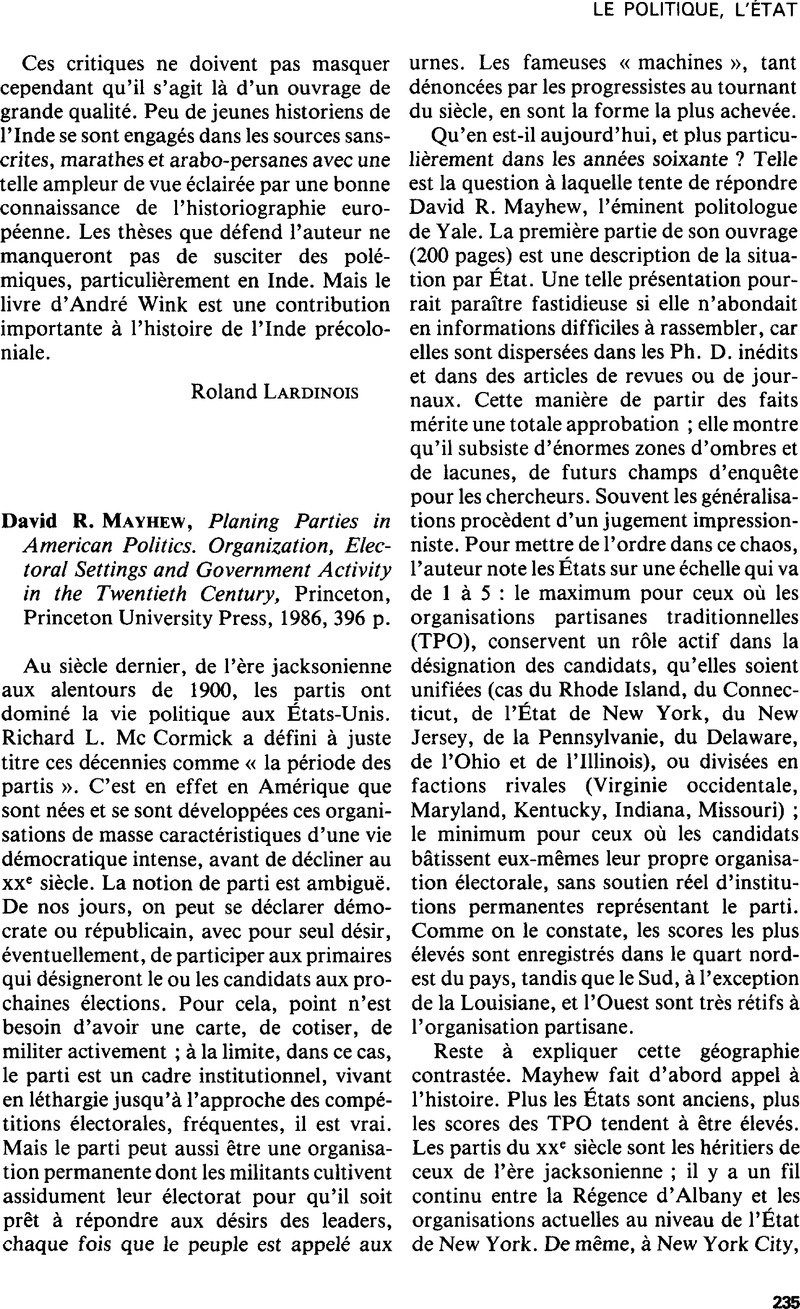No CrossRef data available.
Published online by Cambridge University Press: 26 July 2017

1. Le déclin des partis politiques a fait l'objet de nombreuses analyses, mais les études les plus récentes incitent à mettre en doute le fait luimême. Il est vrai que l'électorat s'identifie de moins en moins à un parti, mais en même temps les partis renforcent leur organisation : les comités nationaux exercent un contrôle plus étroit sur les partis locaux, qui eux-mêmes tendent à devenir plus forts. Cf. Jo Freeman, « The Political Culture of the Démocratie and Republican Parties », Political Science Quarterly, vol. 101, n° 3, 1986, pp. 352-353 ; Paul S. Herrnson, « Do Parties Make a Différence ? The Rôle of Party Organizations in Congressional Elections », The Journal ofPolitics, août 1986, pp. 589-614.